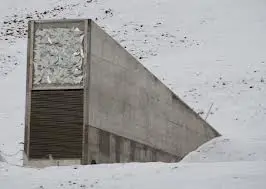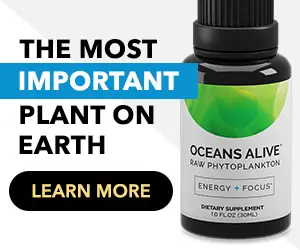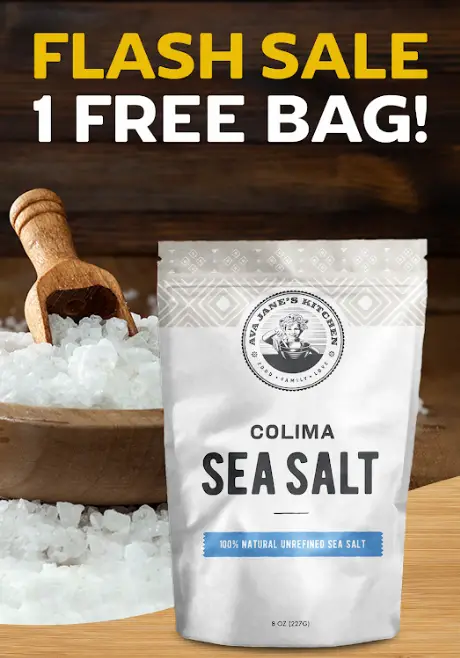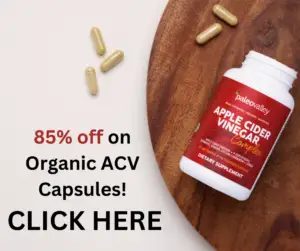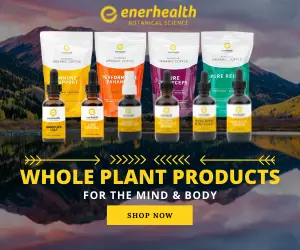Seeds may be one of the planet’s planet’s smallest and most overlooked resources, but they also happen to be arguably its most important.
“Seeds are totally necessary for the great symphony of all life to happen,” as author and artist Martin Prechtel has been quoted as saying.
For many centuries until today, seeds have always been planted, harvested as crops and then saved by farmers, preserving their diversity and the freedom of all people to grow them.
But the corporate agro-chemical takeover of the seed industry has led to innumerable new challenges, many of which are discussed in the upcoming feature-length documentary film ‘SEED: The Untold Story,’ which is expected to come out sometime in mid-to-late 2014 and was executive produced by Hollywood actress Marisa Tomei.
The movie, directed by Jon Betz and Taggart Siegel, creators of ‘Queen of the Sun: What are the Bees Telling Us? (which featured Michael Pollan, the best-selling food and health author)’ and ‘The Real Dirt on Farmer John,’ which have won over 40 international film awards between them, tells the “harrowing and heartening” story of humans’ 12,000 year relationship with seed.
The landmark film is almost finished, but still soliciting donations on its website to finish the film and properly pay its hardworking staff and to help with post-production and editing costs.
Learn more about the film’s mission, why seeds are so important, and what you can do to contribute to the seed freedom revolution in our interview with Betz and Siegel below.

‘Seed: The Untold Story’ features the stories of seed savers and organizers around the world including Dr. Vandana Shiva.
AHW: Hi Jon and Taggart, thanks so much for joining us. So how’s the movie (‘Seed: The Untold Story’) coming along, you said that the filming is about 90 percent done?
JB: Yes, filming itself is nearly complete, we still have a to film a bit more on a handful of interviews but we’re really in the homestretch of production now which is great.
What really lies ahead of us now for ‘Seed’ is the where the art of documentary filmmaking comes in, in the editing room. It’s really all about editing for the next six months which is just really building the whole film and establishing and weaving in all of the storyline threads.
AHW: And the filming was done over what period of time?
JB: We began filming…we first started shooting at the Heirloom Expo in Santa Rosa (CA) a little over a year ago in September and we filmed in earnest throughout the entire year all the way up until this fall so really the film has been in production for a year and a half including the pre-production research.
TS: So the places we filmed after Santa Rosa included India, we spent 10 days there filming at an incredible seed bank, Dr. Vandana Shiva’ s seed bank Navdanya. We really got to see some of the disparity in India where the chemical companies have taken over vast areas and the indigenous population is working to hold onto its many varieties of seeds. There’s a clash between the industrial nature of farming and the more traditional Indian way of farming.
We also spent a lot of time in the southwest working with Native American tribes telling the stories of seeds. Agriculture has been around for thousands of years and we have great respect for them; they developed a lot of the foods we see today.
AHW: So the film focuses mainly on the long history of seeds and how we came to the point we’re at now, pretty much?
JB: Part of the reason we named it ‘Seed: The Untold Story,’ we felt very early on, with the Svalbard (Norway) “Doomsday” seed bank, we’re sure a lot of people are familiar with it, we thought, “What is this story and why have we never really thought (too hard) about seeds?”
Pulling at that and going deeper beyond that, we thought, why is there this “Doomsday” seed bank? “Oh it’s like a backup for the entire planet up there, why do that?” You start to go back and realize this sort of disconnection between seeds and the past 100 years specifically, you begin to see seeds and genetic material as data and information, they want to control it basically.
We wanted to look at that, to fill the contrast of what we’re doing now with seeds. It’s a perspective that has radically shifted where farmers used to save seeds from generation to generation. So this film is about the clash between the two ways of looking at seeds, two different cultures, the modern farming seed paradigm and the seed saving paradigm of self-sufficient farmers controlling their own destinies.
TS: So why did we stop saving seeds? Really as you unravel it more, the industrialized materialistic commercial viewpoint, how did seeds that were once a sacred thing to all cultures and people, become this materialistic thing that you can sell, and is being taken over by big corporations and chemical corporations? It’s like the battle of David and Goliath, we’re trying to protect the little guy from the big guy who’s trying to wipe them out and gain control.
AHW: Sorry to stop that thought for a second, but I just had to ask about the Svalbard Seed Bank, did you guys get access to it for this film by chance?
TS: That wasn’t going to be necessary. We will probably buy some footage that someone has shot of the seed bank but we felt like it could be told by the many seed people we’ve interviewed, concerning those seed banks.
JB: Ultimately we decided that Svalbard was very well known and important in the respect that it is a backup for other seed banks, but it’s not a living seed bank, it’s just a repository for other seed banks. What’s probably more compelling are the living seed banks, the vast network of seed savers, and getting them back out and grown in communities the way they have been for thousands of years, through places like the Seed Savers Exchange. These seed banks are the result of communities wanting to connect with each other. It’s much more about the human spirit (centered around) seeds and the mission to bring them back and preserve the diversity we had.
AHW: Oh, okay. The reason why I asked about Svalbard is because even though it’s pretty well established that it exists, there are still a lot of people intrigued by it and people who want more concrete information because it seems like it’s only talked about on so-called conspiracy websites and things like that.
TS: You just wonder who controls it and puts money into it, of course Bill Gates and Monsanto (are involved) and the average person can’t go get the seeds in there. So it sounds like a safe backup for humanity but well, there are earthquakes, drone attacks…Anything can take that out very quickly, that’s why the living seed bank is our motto of survival. We say, “Yeah, let’s grow it out…” but that takes a lot of will and commitment from the farmer to the seed banks and takes a lot of time and energy, over many years. We’ve sort of forgotten about how to farm, really.
AHW: So how far along is the movement right now, and are there a lot of heirloom seeds and varieties in danger of being wiped out?
TS: Well, once something is wiped out, there’s no bringing it back. As Gary Paul Nabhan (featured in the movie) says, some seeds are as endangered as a polar bear or a panda or an orangutan. There are many seeds our ancestors developed that are gone.
We can’t bring them them back but what we can do is create new ones. That takes dedication in creating new varieties using the varieties we already have, but if you look at the statistics, 94 to 96 percent have disappeared since the turn of the century (of all agricultural seeds).
Imagine all of these ancestors of people coming to America from other countries, they all brought their seeds and shared and spread them around the U.S. Billions of packets of seeds were distributed in the 1800s. Now our government certainly doesn’t do that.
Seeds saved in the seed bank or by people growing them have disappeared. That’s the big wake-up call this film is bringing, you can’t get those back, you have to develop new ones or try to revive some things that have been found. Hopefully they can still be germinated but a lot of them die out after x amount of years and putting them in seed banks doesn’t mean it’s going to grow again.
AHW: So what is the biggest challenge for achieving true seed diversity again?
JB: One of the biggest challenges is simply bringing the importance of seeds back into the consciousness. Not just seeds in general but the concept of seed freedom as Vandana Shiva calls it.
It’s about keeping them unpatented and out of the control of select corporations so they’re sharable as seeds have always been about sharing and generosity. And if we can commit and keep the seeds free, that is a big thing. Right now we’re facing Supreme Court decisions on patenting not just of seeds but of the next generation of seeds, in this case GMO (genetically modified organisms) seed.
The other big thing will be to reconnect the public consciousness to the fact that seeds are the beginning of essential parts of civilization, we owe not just what’s on our plate to seeds but our entire environment to seeds.
TS: Well put. Also as Bill from Native Seed/SEARCH says, he really believes Marching Against Monsanto is one way to approach it, but his approach is more that we need to just get excited about seeds, planting seeds, sharing seeds; new seed banks are getting people to grow more seeds.
Monsanto, yes it’s a serious problem we’re up against but don’t forget about planting and saving the seeds. That’s the biggest challenge, to get the activists out there to become seed savers, community gardens are built around that.
AHW: Was there a place you found during your travels for the movie (‘Seed:’ The Untold Story) that shows a model we can follow for how things should be done?
JB: Well we visited New Zealand, Hawaii, India, Mexico and others…In Hawaii there’s a big fight, all the GMO companies are there. They have their headquarters there because they can grow all year round, but there’s so much that it’s been devastating; with the pollution from pesticides and people getting cancer now. There were lots of marches and they just banned GMOs on the main island, that’s exciting to see that progress.
One of the places doing this is the Native Seeds/SEARCH in Tucson, Arizona, and then there’s Vandana Shiva’s organization in India. They grow it out on their farm and share the seeds back in the community.
Especially with Native American groups, each place has a similar goal in that they’re not just about a single seed bank, they’re involving the entire community in seed saving.
There are 100 different community seed banks in India overall. With Navdanya there’s this amazing start to renewing the sense that all are responsible for seeds and we can’t just rely on single depositories; it’s part of our rights as people to keep our own seeds.
JB: There are also many small seed libraries starting up, inside of a public library in Tucson for example. There’s an inner library exchange where you can check seeds out for your garden then save them and check them back in. It’s a great idea as libraries are redefining themselves, creating a sense of a seed exchange within a public library, these are sprouting up all over the country.
AHW: And what if people wanted to start one of these in their own community? How would that work?
JB: Look up the Richmond Seed Library page, it has some downloadable instructions, a school teacher created it so it can be spread all around.
Is there anything else you guys would like to share about the movie or the seed freedom revolution and how people can contribute?
TS: Yes, always buy open-pollinated seeds, from companies with no connection to Monsanto. A lot of people go into their little nurseries and get seeds for spring, but a lot of those seeds are actually owned by the big chemical corporations.
If you want heirloom seeds that aren’t owned by Monsanto you can try Baker Creek, Seed Savers Exchange, Uprising Seeds, Adaptive Seeds; I’m sure you could find a full list by Googling but these are some good ones.
JB: Some other ones are Wild Garden, Territorial, High Mowing…there’s a whole big handful of them (editor’s note: Google these to find them and buy!).
The other thing is that, you know, some in the audience may know this but it also helps to just not buy food produce by (chemical corporations); it helps to be buying organic food because then you’re not giving money to the same chemical companies that have been eating up and buying up the seed companies for the last 20 years in earnest, that have a consolidated seed monopoly almost now.
You’re not giving money and not perpetuating that. So not only the seeds themselves but also our lifestyle changes do make an impact on seeds and the seed world.
AHW: That’s definitely true. One last thing before I let you go John and Taggart, what about Marisa Tomei’s involvement? How did that come about and what was it like working with her? Also, it seems like more celebrities are getting involved in the organic movement, did she introduce you to others?
TS: It really came about through the ‘Queen of the Sun,’ our previous film, she loved that film and asked what we were making next. She literally wrote us and said, “How can I help?” When you have that kind of support from somebody like that, that’s not us knocking on her door but her offering her service as Executive Producer…
JB: We really felt like having Marisa as Executive Producer would be incredible for the film, she’s doing a lot already to connect this film to its larger potential. There are issues operating in a community of people that (already know about GMOs, seeds etc.) so this issue needs to go beyond those people who haven’t really thought about this too much. People who’ve thought about health but haven’t thought about seeds at all. Our feeling is that together she will be able to help this film reach a much broader audience.
TS: She’s a really nice connector, and in no way was she telling us what to do… The Hollywood scene is a crowd we’re not used to so, I have no idea, we’re just open (to whatever comes their way).
JB: She has connected us with some independent producers who have been very supportive so that’s been great but, those are all potential things that are on the horizon. We agree, there are a lot of celebrities who are getting into the organic movement, and helping so many issues get out there.
TS: Danny DeVito is even anti-GMO for example…Maybe she’ll connect us with other people who can help finance our film; we’ve had a bare bones budget to help get us through but hopefully we’ll get a bigger budget so we can pay people properly…We always struggle, indie filmmakers, to get a budget and make the film and pay people (what they deserve).
JB: I think the real thing…One of the things a celebrity can do to help an issue is to just bring up its prominence and make it exceptional…The seed issue can seem a bit inaccessible. You think of bees for example, they scare people but other people think they’re cute. Seeds aren’t cute to most people.
So, how do you get people interested in seeds? One of the things a celebrity with integrity can do is to help us figure out how to help the film reach a broader audience.
AHW: That would definitely be nice! Anyway, thanks for joining us. Where can people find out more about ‘Seed: The Untold Story?’
JB: They can check out our website for Collective Eye Films or visit the website for the movie, www.seedthemovie.com.
AHW: Thank you for speaking with us.
JB: Thanks for having us!
And thanks to you for reading! P.S. You can subscribe for more in-depth interviews, recipes and much more (and get a free eBook on the healing power of the Amazon Rainforest) by clicking here.
Thanks for installing the Bottom of every post plugin by Corey Salzano. Contact me if you need custom WordPress plugins or website design.


